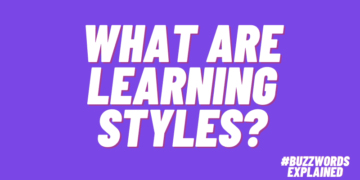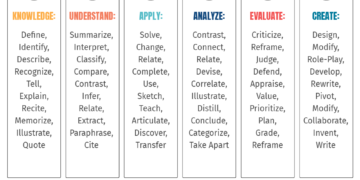Sales Flooring eLearning And Performance Enablement
As an industry, retail remains in a particularly sensitive position at the moment. This includes big-box and large sellers, a few of whom are modifying their earnings downward even now, following inventory stockpiles and sluggish customer costs. The primary hazard is the possibility of a considerable recession as rate of interest rise and the opportunity of a huge, recessionary deflation boosts in turn, as described by an idea leader in the New York City Times [1]
As a response to greater borrowing expenses and decreased investments, business might begin to cause “labor market slack,” developing unemployment in an extremely delicate economy. Meanwhile, customers, themselves handling the fallout of an economic crisis, might decrease their spending on goods. Needing to do more with less, how are retailers to react? What kinds of eLearning and performance enablement tools will assist them represent such a market [2]
Digital Improvement For The Frontline Labor Force: A Service?
Up previously, sellers have focused mainly on automating and digitizing both business operations and client experiences. Anyone who operates in a workplace will understand that digital platforms have actually ended up being core to their daily work lives, while on the consumer side, consumer data is endlessly examined and the consumer experience significantly automated. Consider proposed “VR” looking for consumers and self-service kiosks, for example.
While up to 80% of purchases are still made in brick-and-mortar shops, it is time for retailers to adopt innovation allowing their frontline workforce. These are the individuals and groups who are directly responsible for moving stock, retaining customers, and making high-impact sales– and it’s time to empower the big sales force for success. Yes, this is counterproductive: business employees can easily access software and apps at their desks, while the frontline partners of big merchants can not freely use software applications while on the job. Even if such software application were accessible through their mobile phones, you don’t always want your frontline employees standing around on their phones. Paradoxically, you might imagine, innovation indicated to increase productivity may end up dragging it down.
Yet this is a new age, one with brand-new developments, disruptions, and realities, which indicates that merchants should believe outside the box. While merchants purchase online eCommerce, they’re leaving their most important resources– the people who sell their items– stranded on the sales floor without the information and automation that are powering the remainder of the retail market. The whole of the shopping experience, from the supply chain [3] to the buyer’s journey [4], has actually been transformed and enhanced with modern-day technology, except the labor force itself. So, if you’re a seller, what type of labor force performance enablement tools should you search for, and how might your frontline usage such innovation? What does an usage case actually look like?
Wield Retail Performance Enablement Tools, In The Right Way
Retail training is infamously sensitive [5], if not typically downright bad (“Many retail workers receive no training,” writes Retail Dive). Clearly, this can lead to consequences for stores, as untrained or improperly trained employees press clients away. The service here is to find a way to supply clever L&D tools to retail staff members, innovation which has actually assisted a lot of business in markets that vary from direct selling to partner enablement and beyond. Such tools automate training, make sure knowledge absorption, and track efficiency. This causes a regularly high-performing workforce.
The challenge is how to do so for the retail workforce, for the reasons we talked about earlier– partners don’t always have a great deal of extra time for learning about the very best client service practices or diving deeper into present incentives and promotions to drive personal sales. The answer here, in the primary, lies in the problem of system architecture. Though that sounds intricate, it really simply refers to how the platform they’re utilizing has actually been constructed, developed, and integrated: how and what type of finding out gets delivered to them; how dynamic it is, how adaptive, and how concentrated on driving crucial metrics.
Knowing needs to be as smartly appropriate and as targeted to each private worker as possible and must be offered as needed for them to use– the issue with a lot training and development, naturally, being that it just spits out workers without assisting them enhance continuously; without sticking with them every step of the method as long as they are with the business. Without these elements, it’s tough to make it possible for staff members to find out, establish, and begin offering more product more effectively.
If you can find eLearning and performance enablement tools that retail workers wish to and do actively use, the results for your retail business will be substantial, because such tools are constructed to drive sales and consumer retention en masse, throughout the workforce. Let’s break it down into 2 parts: innovation that’s relevant and instantly targeted for each retail staff member, and innovation that is offered as needed when they want it.
1. Pertinent And Targeted
The crucial obstacle here is to ensure that when staff members have downtime on the sales floor (which frequently does not last long at all, particularly in the holiday season) they’re accessing discovering that’s going to rapidly provide eLearning that corresponds to a distinct requirement of theirs, not some kind of information that everyone on the sales floor is getting at once. If I’m an associate making the base pay, why would I click such a notice?
What you wish to try to find is a platform that improves and individualizes the finding out experience as much as possible, utilizing numerous data circulations. That method, the minute the employee receives a notification from their eLearning app on their mobile device, they will see that it’s exactly what they need at that point in time, for example, how to sell a particular stock product they have been having a hard time to move, however that will help them make a large commission throughout a week when they’re underselling. They have a couple of minutes free; they’ll open the training, which has adaptively been presented to them to reinforce item knowledge. It relates to their instant understanding gaps and customized for their needs in terms of both learning and sales efficiency.
This is one instructions in which eLearning and efficiency enablement innovation can move: from the technology toward the employee, with the app proactively activating appropriate knowing utilizing past and present efficiency data. Yet no efficiency enablement app is total unless it enables the staff member to train and find out on demand.
2. On-Demand Accessibility
No innovation can totally automate the human experience. Human beings are spontaneous; they will always have needs and desires that technology can not pick up. For example, the iPhone– among the most intelligent innovations around– has a nasty practice of revealing people pictures they don’t always want to see.
For retail, the secret here is to utilize a platform that makes it possible for on-demand knowing, training, and upskilling. The staff member’s app should let them browse subjects at the minute they want to discover them. That method, if this or that staff member all of a sudden wants a refresher on the advantages of purchasing a specific model of couch, they can browse it in the app’s subject library and find a deep dive developed by business HQ for the benefit of employees such as themselves. They can end up being an “expert” on whichever items, sales strategies, consumer retention methods, and other details they feel will assist them upskill.
To put it simply, your app must be able to smartly emerge pertinent and targeted training that is fully incorporated with each person’s efficiency data. Yet it’s simply as crucial that the worker be able to upskill as they want. The app must then be able to read this information, draw conclusions, and upgrade its approach to pertinent and targeted learning based upon what it itself learns from their on-demand training. This would be truly wise performance enablement technology for retail, discovering the staff member even as they learn.
Sellers Should Digitally Transform The Workforce To Stay Competitive
For retailers today, with so many dangers in proof, the need to innovate on the sales flooring is genuine. It’s happened before– for example, Walmart developed an entire new paradigm for sales partners by treating them as part of a culture and a household. Like we’ve explained, the clearest and most reliable way to innovate the labor force is by adopting digital transformation strategies like those that have worked so well for corporate and consumer populations, such as eLearning and performance enablement tools. These tools, however, have to make the learning experience as appropriate and as targeted as possible to each private retail employee by utilizing sales data, and it ought to be able to gain from the worker themselves as they look for on-demand upskilling. Otherwise, staff members can not grow in the method they require to in order to fight the complex obstacles of retail today.
References:
[1] The First Global Deflation Has Begun, and It’s Uncertain Simply How Agonizing It Will Be
[2] eLearning Technologies That Boost Worker Efficiency
[3] How Supply Chain Automation is Changing the Landscape
[4] DRIVING CUSTOMER EXPERIENCE USING AR/VR INNOVATIONS
[5] Sellers Losing Consumers Over Worker Experiences and Training
Editor’s Note: See our online directory to discover, choose and compare Learning Management Systems for Retail Market



















